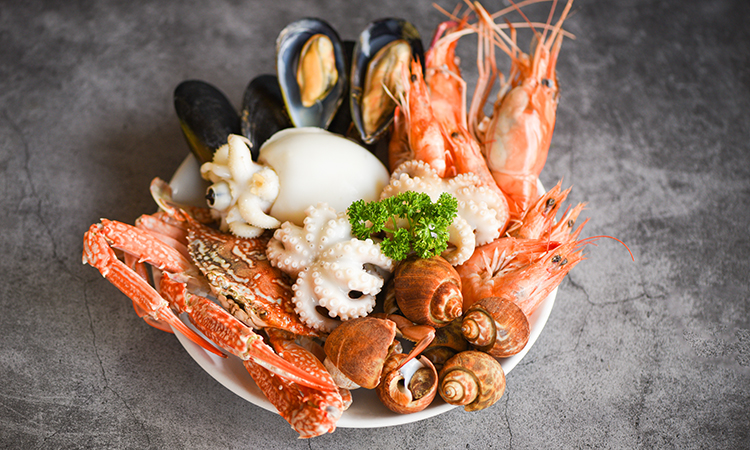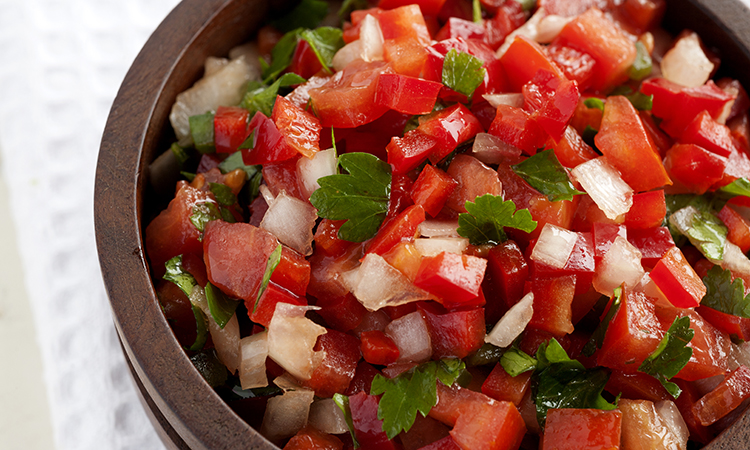Riding the next wave of alternative protein
- Like
- Digg
- Del
- Tumblr
- VKontakte
- Buffer
- Love This
- Odnoklassniki
- Meneame
- Blogger
- Amazon
- Yahoo Mail
- Gmail
- AOL
- Newsvine
- HackerNews
- Evernote
- MySpace
- Mail.ru
- Viadeo
- Line
- Comments
- Yummly
- SMS
- Viber
- Telegram
- Subscribe
- Skype
- Facebook Messenger
- Kakao
- LiveJournal
- Yammer
- Edgar
- Fintel
- Mix
- Instapaper
- Copy Link
Posted: 23 February 2021 | Sylvian Jouet | 1 comment
Plant-based fish and seafood products are set to be the next big thing in alternative protein. Here, Sylvain Jouet examines the opportunities and challenges for the manufacturers developing these products.


Could we soon see plant-based seafood on menus and shelves?
Plant-based innovation is one of the biggest and most exciting growth areas in the food industry today, and while meat substitutes are the fastest growing sub-category in this market (an increase of 152 percent in 2019), fish and shellfish alternatives are now poised for dynamic growth. Investment in alternative fish and seafood startups has been brisk, with new companies and products starting to expand the market.
A perfect storm
Consumer interest in these products is being driven by the same concerns about health, ethics and the environment as for meat substitutes, but these are playing out in ways specifically related to the fish and shellfish industry.
Consumers are concerned about overfishing, marine pollution and the environmental impact of the fishing industry on biodiversity. They are also increasingly worried about the health implications of microplastic contamination in fish and crustaceans, and growing levels of mercury in some fish species.
Set against a backdrop of rising global demand and prices, this is creating the perfect storm against which fish and shellfish substitutes are ideally positioned to capitalise as a competitively priced, healthier and more sustainable option.
For manufacturers preparing to take the plunge, plant-based fish and seafood presents great opportunities and, of course, its own complex challenges. But while consumer interest is growing, for these products to become a regular part of their diet, the look, feel, nutritional content and, most importantly, taste must all be right.
Taste still drives consumer preference
While ethical, health or environmental concerns are important, ultimately the deciding factor for consumers remains the product’s taste. If it doesn’t taste good, the consumer is unlikely to buy the product again.
There are four key areas for consideration when developing flavour for these products. The first is building the taste and body of the basic fish flavour. Once this has been developed, one of the most challenging areas for plant-based products is the masking of off-notes from the protein base, especially if a mix of proteins is used. For example, in products using texturised vegetable protein based on soy or pea proteins, unpleasant off-notes associated with the protein base must be overcome.
The next step is to create the flavour profile for an authentic taste, reflecting specific species characteristics, and building back any taste gaps against the target. Finally, culinary cooking cues can be added, such as smoked, grilled, canned, boiled or raw.
Fish and seafood substitutes lend themselves well to pre-prepared dishes. Consumers are excited by new taste experiences and there is significant opportunity to develop dishes inspired by global flavours and spice blends from the many cuisines around the world where fish and vegetable dishes take centre stage.
Particularly popular at the moment are dishes using inspiration from Asian flavour palettes, such as teriyaki, red and green curry, soy sauce, and sweet and sour, as well as spicy South American-inspired ingredients like chipotle, jalapeno and blends like pico de gallo.


Pico de Gallo, or Salsa Fresca, has been identified as a potential flavour trend
Creating an authentic eating experience
The right eating experience is a vital part of creating a successful product. Choosing the right protein base is the first stage of this process and depends on several factors such as nutritional content, functionality, texture, taste, sourcing and cost.
Soy, with its high protein content, tends to be the first choice for manufacturers of fish and seafood substitutes. Its flexibility and low cost make it a very attractive source, but it is also an allergen, which means it is not suitable for all consumers. With a similar profile to soy, pea is a popular allergen-free alternative, especially for higher quality products.
Many manufacturers use soy or pea as their primary base with wheat gluten sources to balance the mix. Other popular plant-based proteins that are usually used in combination are oats, chickpea, lentils, fava and navy beans, sunflower, and flaxseed.
For shellfish substitutes, manufacturers use seaweed, algae or starches such as konjac powder as a base. These closely mimic the texture of real shrimp and can be applied to lobster, crab, prawn and calamari alternatives. The biggest drawback of these bases, however, is their low protein levels and therefore additional protein must be added to boost their nutritional content.
Getting the mouthfeel right is often tricky, but can be achieved by incorporating a mix of agents – gels, protein isolates and starches – with the protein base, during production. The desired mouthfeel will determine which ingredients are needed, the balance of which requires an experienced food scientist and lots of hands-on application knowledge. All components must work synergistically and be functionalised at the right time, with the right process or amount of water.
Easy on the eye
Visual appeal is hugely important in food, and achieving suitable colour solutions for fish substitutes varies in difficulty depending upon the sub category. For white fish, it is necessary to whiten the plant-based protein base, which is beige to yellow depending on the formulation. Salmon and crustaceans require orange to pink/red colours with good stability across processes. For tuna, manufacturers are looking to replicate the colour change that happens during cooking when fresh tuna turns from a deep red colour to brown.
This colour change can be a real challenge due to the complexity of food matrices in these products. It is possible to create the much-desired cooking transition effect but it is complex and requires customised solutions.
Finally, with the environment and health being key consumer drivers, natural and vegetarian colours are a must, and vegan colours are highly desirable.
Future gazing
Alternative fish and seafood products are seeing some of the most interesting innovations in the plant-based space. Algal proteins developed from algae or seaweed are currently gaining great interest as a protein base for these products.
Grown in water via photosynthesis, this novel protein has a complementary flavour profile for fish and seafood, making it an attractive protein source for manufacturers and a logical, easy-to-understand ingredient for consumers. While there are still challenges for successful large-scale production, in particular scale-up costs, it is likely to be a future growth area for these products.
Research into cell culture and lab-grown products is also expected to be fertile ground for innovation and new technology development in this space, particularly as replicating the texture of whole muscle products is an even greater challenge for fish alternatives than for meat substitutes.
About the author
Sylvain Jouet is the Global Product Manager Meat Substitutes, Fish and Seafood, Givaudan Taste & Wellbeing. Sylvain studied at the University of Rennes 1 (France), where he graduated with a Master’s degree in Nutrition and Food Science.
Most of his career has been spent in savoury and snacks in various technical roles before moving into a commercial role as Global Product Manager with Givaudan, based in Paris. Sylvain is currently responsible for developing and executing Givaudan’s global strategy for meat substitutes, fish and seafood solutions within the Global Category Management organisation.










Sustainable microbial proteins directly address Food Security, Land intensification, and Climate Change…. More investments into this sector are needed, in addition to Plant based Proteins and Lab-meats. Alternative proteins made from Microbial Sources which feed on carbon-based feedstocks solve many global challenges! Microbial Proteins have the greatest potential to DECOUPLE livestock and aquaculture from land use and climate change, compared to Plant based proteins, Insect Proteins and Lab-meats – all of which are not readily scalable!